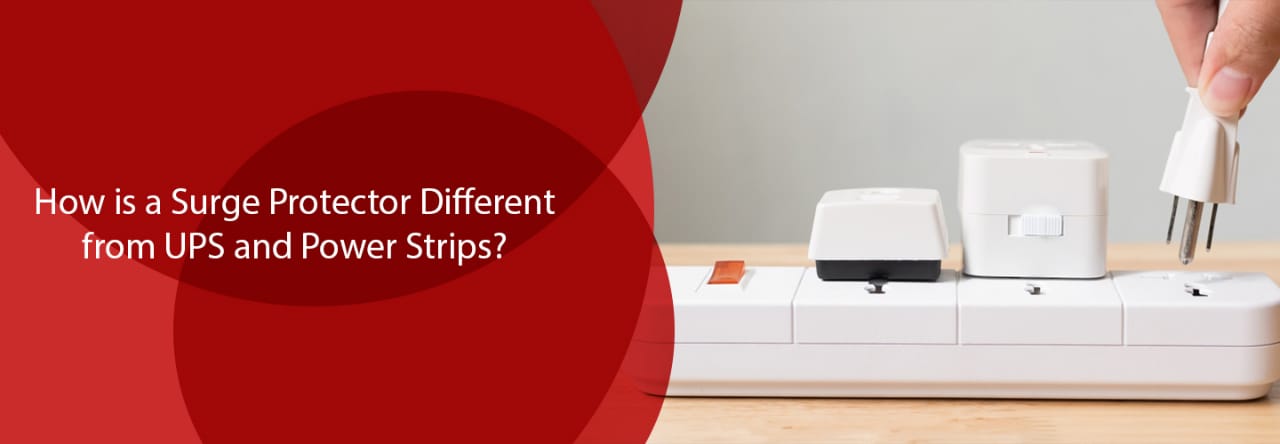Table of Contents
You probably need to charge more than one device at a time. Adding extra AC outlets, and even USB charging ports is one advantage of surge protector, but many of these models add an additional layer of protection against an unpredictable, but common, power surge.
These sudden spikes in power can easily damage your home appliances and devices, so having a separation between the power in your wall and your electronics is in fact a good thing to be done.
Surge protectors, uninterruptible power sources (UPS), and power strips all offer protection and power to your PCs and devices. But it’s important that you understand how these devices work so that you can distinguish which one protects your equipment the best.
Not every surge protector is created equal. They come in a wide range of prices and features to consider. And in all honesty, some even come with questionable marketing promises as well. This makes it hard to figure out what’s true and what’s nonsense. We’ll help you sort through it.
Surge Protectors, UPS and Power Strips
External power accessories have the ability to improve the experience of using a computer or any other electrical device. Surge protectors and UPS offer peace of mind that if there was a surge while you were working, it’ll keep your data and device safe.
This is very common during poor weather conditions. When you’re purchasing a surge protector, there are a few details you should consider.
Surge Protector and Power Strip
First and foremost, not all power strips actually surge protectors. A power strip doesn’t always have surge protection. However, a surge protector functions just like a power strip that has multiple outlets and also protects your electronics from power loss because of voltage spikes.
This is helpful during lightning strikes or power surges from a power company problem. You shouldn’t have to choose when using a surge protector vs a power strip for PCs and devices. But, to safeguard your electronics, you should definitely make sure that if you’re buying a power strip, it is a surge protector.
Installation Options
Rather than plugging in a surge protector into a wall socket, you can also mount the surge device to the circuit breaker panel. Or, you could also choose a surge protector with a single outlet for one appliance or device.
You might also be able to find surge protectors that are specifically designed for cable, telephone lines, and more.
Surge Protector and UPS
While a surge protector works like a power strip, UPS functions as temporary backup power. A UPS device works independently, by providing a power supply when the main power supply fails. Moreover, a UPS also protects you alongside the devices when there’s a disrupted power.
UPS devices also deliver power in an instant when the main power supply ceases, giving very little time for an interruption in the power supply. The power supplied through the UPS comes from batteries, flywheels, or supercapacitors.
This, however, isn’t always a long-term solution, gives you some time to find yourself an alternate power source without having to lose your work face the risk of damaging your machine. Most, if not all UPS devices give you around a couple of minutes of battery backup power, whereas others keep your devices running for a longer time.
Also Read: Y2mate 2022 – A Versatile and Useful Video Downloader
Tips for Safely Using Surge Protectors and UPS
When you use a UPS or surge protector for devices and PCs, especially if you use them at the same time, here are some safety tips to keep in mind:
- Never plus your surge protector in a UPS outlet. Always remember to use wall sockets to avoid drawing in too much power from the UPS.
- Never plug your UPS into a surge protector. It’s not advisable to plug your UPS into a surge protector for the same reason above.
- Get the appropriate number of outlets. When buying a surge protector, power strip, or UPS, you need to consider the number of outlets you need. The more the outlets, the more room you have to plug in any device.
- Find out the absorption rating and clamping voltage for surge protectors.
Conclusion
There’s no reason why you should not get a surge protection device. Which one you need, depends on your needs. Surge protectors protect sensitive appliances and devices from power surges, and power strips offer a convenient way in which you can plug all your devices in a single location.
Lastly, UPS battery backup devices safeguard both your work and device against any damage caused by a power surge.



